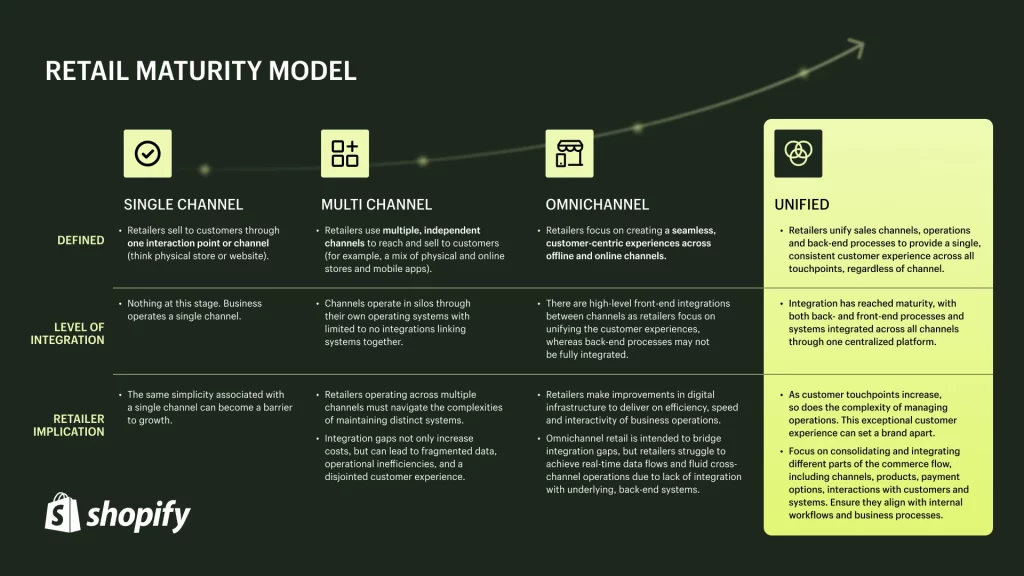Unified commerce goes beyond omnichannel strategies. While omnichannel aims to provide a seamless experience across different channels (online, in-store, mobile), unified commerce integrates all front-end and back-end systems into a single platform. This means that product, order, and customer data flow from a single source of truth. The result: a consistent and personalized customer experience, regardless of the point of contact.
Why omnichannel is no longer enough?
Although omnichannel is effective on the surface, it often relies on fragmented systems. These technological silos lead to data synchronization issues, communication delays, and high maintenance costs. In contrast, unified commerce eliminates these inefficiencies by centralizing operations and simplifying data management.
The EY-Shopify study highlights several tangible benefits for businesses that adopt a unified commerce strategy. Here are the key takeaways:
1. Reduction in Operational Costs
Unified commerce enables an average reduction of 22% in total cost of ownership (TCO) compared to competing solutions. This reduction is attributed to the elimination of middleware, lower third-party support fees (-7%), and native integration between POS and e-commerce platforms.
2. Increased Revenue
Retailers using Shopify POS have seen an average 8.9% increase in annual sales. This growth is driven by features such as customer data integration, enabling more targeted marketing campaigns and personalized recommendations.
3. Enhanced Customer Experience
With a unified data view, retailers can deliver personalized experiences at every stage of the customer journey. Features such as “Buy Online, Pick Up In-Store” (BOPIS) or the “endless aisle” concept cater to modern consumer expectations for total channel flexibility.
4. Operational Efficiency
Native system integration reduces manual tasks and errors. For instance, one retailer was able to cut down 50 hours per week previously spent on omnichannel order management, freeing up resources for higher-value activities.

The study also emphasizes the importance of redefining key performance indicators (KPIs) to reflect the realities of unified commerce. Here are some examples of KPIs to prioritize:

The EY-Shopify study is clear: unified commerce is not a passing trend but a strategic necessity for retailers aiming to remain competitive. Here’s why action is urgent:
The EY and Shopify study demonstrates that unified commerce is much more than a mere technological evolution. It is a fundamental transformation that places the customer at the center of all operations. For marketing and e-commerce executives, investing in a unified commerce strategy is an opportunity to enhance customer satisfaction, improve operational efficiency, and drive long-term growth.
Adopting unified commerce today ensures a competitive edge in the retail landscape of tomorrow.
At Horrea, unified commerce is at the core of our expertise. If you want to learn more about how this approach can transform your business, do not hesitate to contact us.